Istanbul, Turkey: Travel review of a city straddling Europe and Asia where locals love cats, kebabs and culture
I seriously doubt that Agatha Christie ever tucked into a kebab. No, it must have been one of Istanbul’s other limitless charms which meant she chose to stay in room 411 of the Pera Palace Hotel, purposely sequestered away from views overlooking the Golden Horn harbour of the beautiful Bosphorus Strait. This was no accident, the story goes - she was not to be distracted while writing Murder on the Orient Express.
If there’s any truth there, it would have been a wise decision. Had she been surveying the sights, the fictional murder mystery would surely have made way for time immersed in the real life puzzle of Istanbul’s labyrinthine streets of what was once Constantinople.
Advertisement
Hide AdAdvertisement
Hide AdIn 2024, it’s a place where domes from the sixth century compete for attention with bazaars and markets, or the smell of street food, a call to prayer, strokes for the omnipresent cats and dogs, or a walk along the water to see this sprawling home to at least 16 million people over 39 districts – spread over a major metropolis straddling both Europe and Asia.
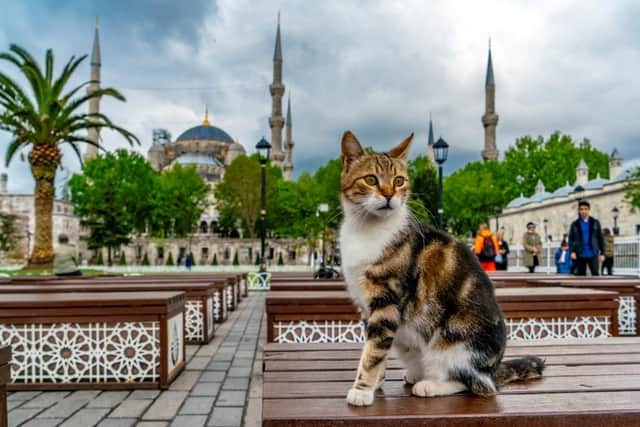

I’m no Agatha, but the opportunity to try some of Turkey’s cuisine is one of the chief reasons I’m here, at the invitation of the country’s tourist board, while also learning about some of the city’s retail offerings over a long weekend in February.
"Geographically, Turkey is very interesting, and historically, amazing," says Ayşem Erginoğlu, our encyclopaedic tour guide.
"It's a big peninsula, we call it Asia Minor, or Anatolia, and surrounded by the seas - north is the Black Sea, then we have the Sea of Marmara and Aegean, and then in the south part of the country is the eastern Mediterranean.
Advertisement
Hide AdAdvertisement
Hide Ad"Istanbul is a very important part of that because it's like a bridge connecting the west to the east. Therefore the culture was grown that way too, so you find in the city lots of contrasts - from history to very modern, from, I would say, conservative to very liberal, and we have a very young population in the city as well."
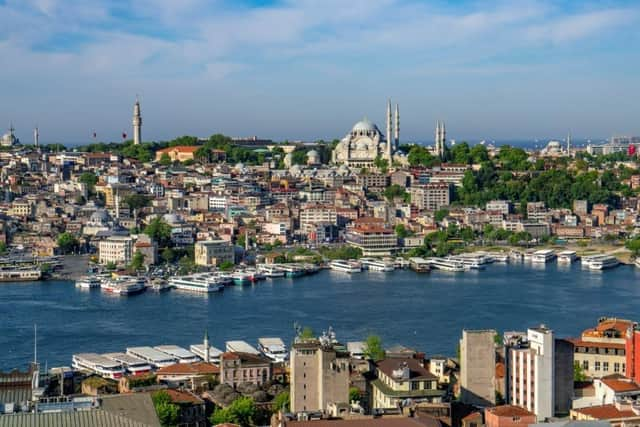

No real history of Istanbul or Turkey can be summed up in a paragraph, but over the centuries there has been Roman (the Byzantine Empire) and Ottoman rule, before the modern republic was created in 1923 with founding father Mustafa Kemal Atatürk as its first president (there are still large posters of this beloved figure all over the city).
There are certain world renowned monuments: the Galata Tower, arguably the most famous structure of the skyline, was initially built in 1384 by a community of Italian immigrants mainly from Genoa.
Advertisement
Hide AdAdvertisement
Hide AdFurther back in history is the Hagia Sophia, originally a Byzantine church constructed between 532 and 537, which was converted to a mosque and is considered one of the world’s great buildings.
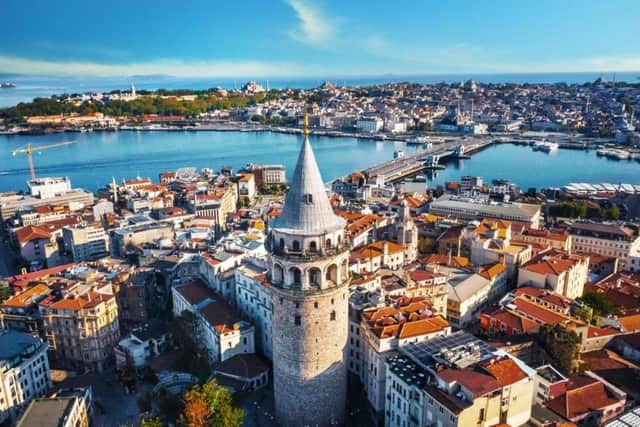

Facing it is the Blue Mosque, commissioned by Ottoman Sultan Ahmed I some 11 centuries later, another of the city’s main tourist attractions and known for its magnificent colour inside.
Likewise, we find ourselves close to the Rumeli Fortress, built in 1452, on an unseasonably sunny morning when we stop for a traditional Turkish breakfast at Kale Cafe & Restaurant. This eatery, near the Fatih Sultan Mehmet Bridge, is visited mainly by locals.
What’s served is hearty and diverse, sweet and savoury fare, with highlights including bal-kaymak (buffalo milk cream with honey), tahin-pekmez (tahini mixed with grape molasses), muhlama (flour, butter and cheese, pan fried – this delicious stringy predicament is one for the Instagram posts), and baharatli peynir ezme (crumbled cheese with herbs and spices).
Advertisement
Hide AdAdvertisement
Hide AdIdeally, the restaurant is located by an area for wandering along the promenade towards Bebek, where lines of fishermen prospect for sardines at the edge of Bosphorous’ most narrow point – an upmarket neighbourhood which even homes the city's most expensive cemetery, Aşiyan Mezarlığı, for those hoping for a waterside view in the great beyond.
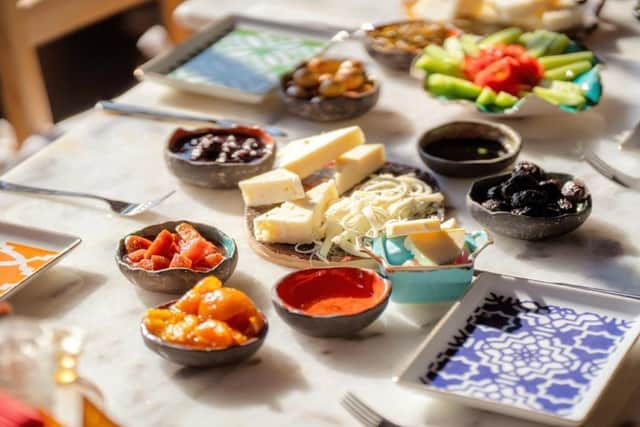

Present, also, are some of the city’s best-loved residents - the sort with four legs and a tail. Just like many of the men in Istanbul, it’s the fashion for dogs here to wear earrings too, but in the latter case they are tags showing which have been neutered. The cats, too, enjoy (or tolerate) a good fuss. As they are well-fed, accommodated and treated with love by locals - feeding trays are a regular feature of the pathways here, while every car bonnet is a potential bed - it seems there is every incentive for these little charmers to live harmoniously with humans.
A look at the fashionable quarter of Nişantaşı reveals a different scene altogether (even if the felines rest on the steps of Louis Vuitton). This is where many of the luxury brands live and while many can be found in any major city worldwide, Istanbul has Vakko, the department store named after businessman Vitali Hakko – a good place to buy quality chocolate or macarons.
But the city has its artisan producers too. In an old, gated complex near Taksim Square, a mini commune of women crafters can be found.
Advertisement
Hide AdAdvertisement
Hide AdTülin Bozüyük, a former classical ballet dancer, set up her pottery shop Atelier Touline five years ago in the studio where the famous ceramicist Füreya Koral once worked and lived.
“Years later, I’m working in her studio and I also live here so it’s my dream come true,” she says.
Tülin had been in the wine business for 12 years and opened her own restaurant in 2015 but was struggling to find the plates she wanted. After taking classes herself, she “fell in love with the ceramics, with the kiln and the mud. So I said, okay, that’s it, I just want to spend my life with ceramics.”
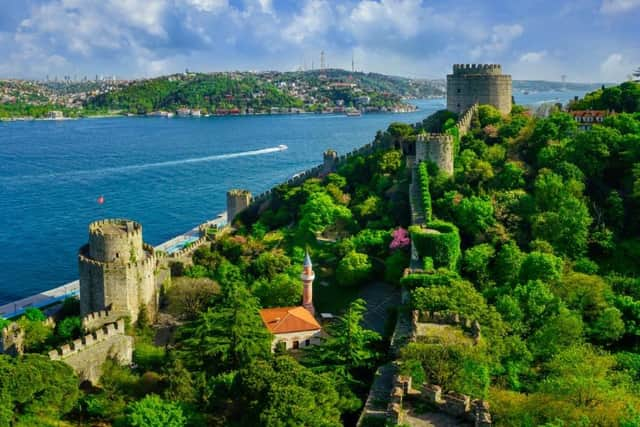

Now she works with chefs around the world, including those at Michelin-recognised restaurants. “If the energy connects with the customer, we love to work with them,” she says.
Advertisement
Hide AdAdvertisement
Hide AdHer neighbours are Pinar Yegin, an artist whose walls are filled with her charming tile sculptures, and Alkimia, an alchemy shop devoted to the “magical and mystical”.
In the evening Mürver, a Michelin-recommended top floor restaurant, not only serves well-rendered lamb but a stunning nocturnal vista over the strait too. Inside, the open kitchen and long, low-lit assortment of tables provides a spirited atmosphere to end our first evening.
"So, today we will be on a different continent,” says Ayşem the next morning outside the Galata Istanbul Hotel, our very comfortable accommodation (above which we enjoyed delicious mezes at the Mesai Karaköy restaurant).
We cross to the Asian side over the Bosphorus Bridge, now called the 15 July Martyrs Bridge after the 2016 failed coup attempt. (On the subject of safety, incidentally, I personally felt safe at all times, though we were shown around by guides in generally upmarket areas).
Advertisement
Hide AdAdvertisement
Hide AdThe bridge cannot be used by pedestrians, except for during the Istanbul Marathon - a perk which ensures plenty of people sign up just for the privilege of travelling from one continent to the next on foot.
The lifestyle in the Asian part is, says Ayşem, “relatively easier, because it’s not so chaotic like the European side”. And so it proves: a Sunday morning walk along Bağdat Caddesi (Baghdad Street, or avenue), a popular area for shopping and dining, is totally different to the previous day’s bustle.
Meanwhile, the neighbourhood of Moda has become a buzzing area for cafes and culture. Here, visitors will find beautiful parks and plenty of teahouses, where for the price of a coffee customers can take their own picnic and enjoy a waterfront view under a canopy of pistacia atlantica - a species of pistachio tree common to the area.
Kadiköy Market, nearby, is the place to be on a Sunday, especially for food lovers. It is full of life and teeming with produce, where olives have been pickled with blueberries to become a luminous purple; or people can try Tulum cheese, so strong the mouth tingles after being ripened in the skin of goat; and where Çiya Kebap, the celebrated restaurant of Musa Dağdeviren, who featured on the Netflix show Chef’s Table, can be found.
Advertisement
Hide AdAdvertisement
Hide AdThis is stand-out traditional Turkish food. There is dried aubergine with tomato paste and rice, pistachio kebab (as good as it sounds – Agatha might have gone for this one), lavash bread (which comes inflated like a balloon), lamb with figs, and perde pilaf, known for being a wedding dish of rice with chicken, onion, raisins and almonds, served in pastry.
Later, simit (a kind of sesame pretzel) bought from street vendors is also delicious - and the gulls seem to think so too. It’s common to throw treats from the commuter boats for birds as they fly alongside the ferry, which is exactly what I find myself doing on the way back to base.
Keep your head up, though, and behold a clean sweep of the city’s landmarks - consider this an affordable, and one of the very best, views you can get of Istanbul.
First, it’s worth a stop in Galataport, a major waterfront transformation – the project has brought to life an area previously closed to visitors for almost 200 years and is home to the likes of the Istanbul Modern art gallery.
Advertisement
Hide AdAdvertisement
Hide AdAs the trip is coming to an end, Ayşem tells us that Turks have an expression, “Şeytan tüyü”, meaning the devil's feather – possessed by those who can charm and convince others easily. It seems to me that the people of Istanbul – you know where I’m going with this – have plenty of such feathers in their caps.
Comment Guidelines
National World encourages reader discussion on our stories. User feedback, insights and back-and-forth exchanges add a rich layer of context to reporting. Please review our Community Guidelines before commenting.